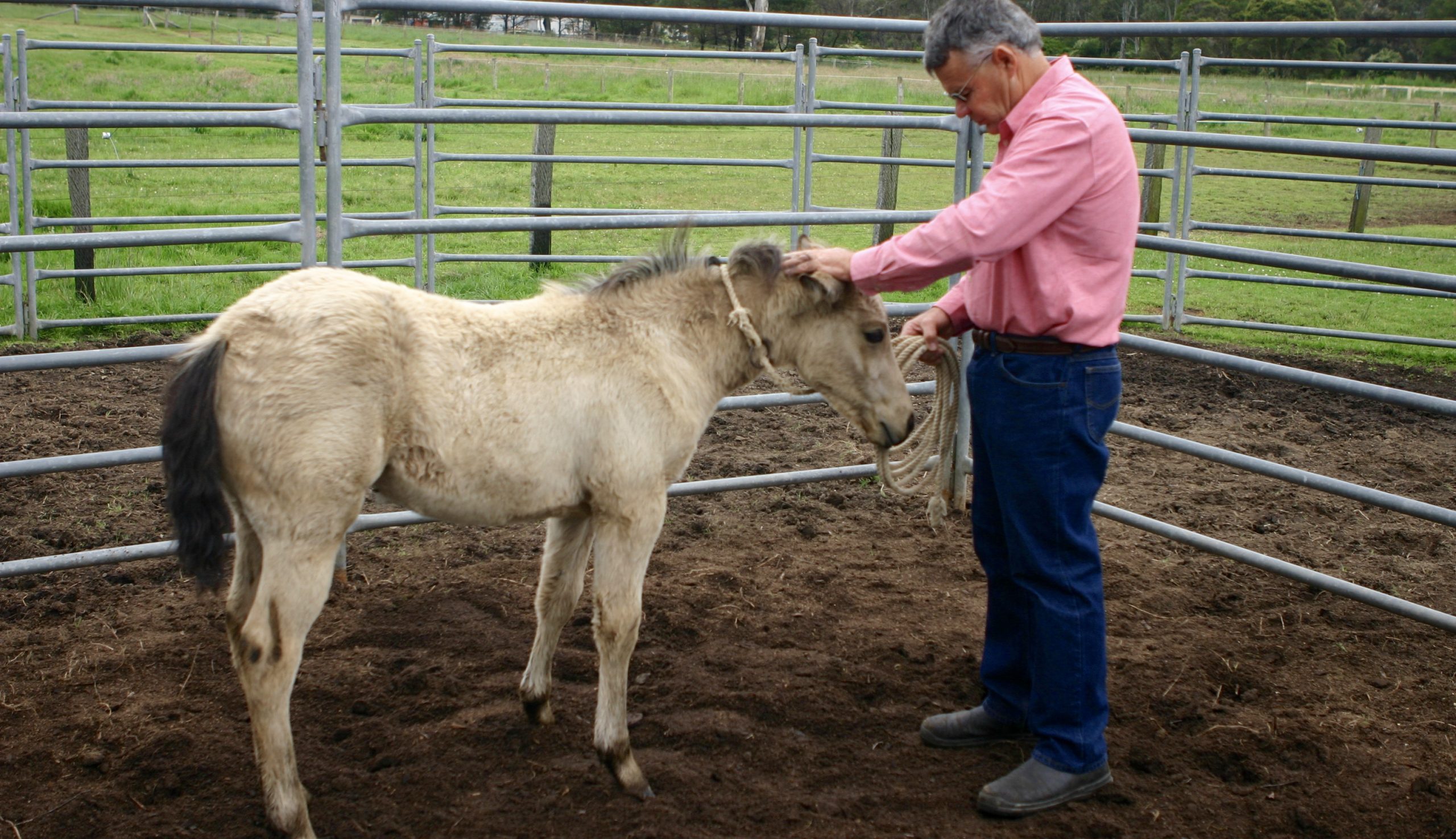Here are some old wives’ tales from the horse world.
I’ve heard them over and over, all my life.
1. One white foot, buy him.
Two white feet, try him.
Three white feet, be on the sly.
Four white feet, pass him by.
The best horse I’ve ever ridden had four white feet.
2. Chestnut horses are more highly strung than other horses.
A horse’s colour has absolutely nothing to do with his temperament.
3. The whorls on a horse’s face and neck are an indication of his temperament.
Supposedly, the whorls on a ‘bad’ horse are in different positions and go in a different direction to the whorls on a ‘good’ horse.
This is total nonsense, even though studies have been done to suggest it’s true.
Studies that rely on someone’s opinion of an animal’s temperament aren’t scientific –
they’re just someone’s opinion.
4. Using feed to catch a horse is ‘bribing him or ‘spoiling him’.
Call it what you will but it’s always better to have your horse chasing you, rather than you chasing your horse.
Some people prefer to chase their horse every day, rather than take some feed for him.
5. Laying a horse on the ground releases a chemical into his brain that causes a change of temperament and attitude.
This is a fairy tale.
Every horse lays down to sleep, so why isn’t the magical chemical released then.
What difference could it possibly make if he’s forced to lay down?
See how horses really think and learn in my book.
6. Tying a horse up to a tree or a fence for hours at a time teaches him patience and helps make him ‘quiet’.
Tying a horse up for hours on end teaches him absolutely nothing.
7. Young horses should be tied to something solid so they can pull back and learn that they can’t get away.
Tying any horse to a solid object and letting him fight is cruel.
The only thing the horse will learn, is to pull back and fight.
8. Strapping or hobbling a horse’s legs forces him to submit and teaches him that struggling is pointless.
Again, this is cruel.
The only thing the horse will learn, is to fight against you when you handle his legs.
9. Hosing a horse’s legs ‘desensitises’ him and makes it easier to handle his legs.
When a horse is frightened, hosing his legs will only frighten him more and teach him to kick.
A hose shouldn’t be introduced until the horse is confident and relaxed and his legs have been handled.
10. You must be your horse’s leader.
Your horse isn’t looking for a leader.
He’s just trying to make life easy for himself.
11. You must be higher than your horse in ‘the pecking order’.
Horses don’t think you’re a horse.
Horses don’t assess humans to decide who’s higher or lower in some imaginary pecking order.
12. A horse will join up with you and submit to you if you chase him in a round yard.
When you chase a horse in a round yard, he has two options –
run, or stay with you.
Most horses eventually work out that it’s easier to stay with the trainer.
However, a frightened horse will run to the point of exhaustion rather than approach the trainer.
13. A horse has to work some things out for himself.
Horses can’t work things out for themselves.
We have to teach them every step of the way.
14. Every young horse must be ‘mouthed’.
You can’t teach a horse’s mouth anything.
The only part of any horse that anyone can teach is his mind.
15. It doesn’t matter if a horse bucks or fights in his early training because he’ll soon ‘get over it’.
The truth is that horses never ‘get over it’.
You can’t tell any horse to remember one part of a lesson and to forget the frightening part where he bucked and fought.
Always remember, you can’t erase any horse’s memory.

